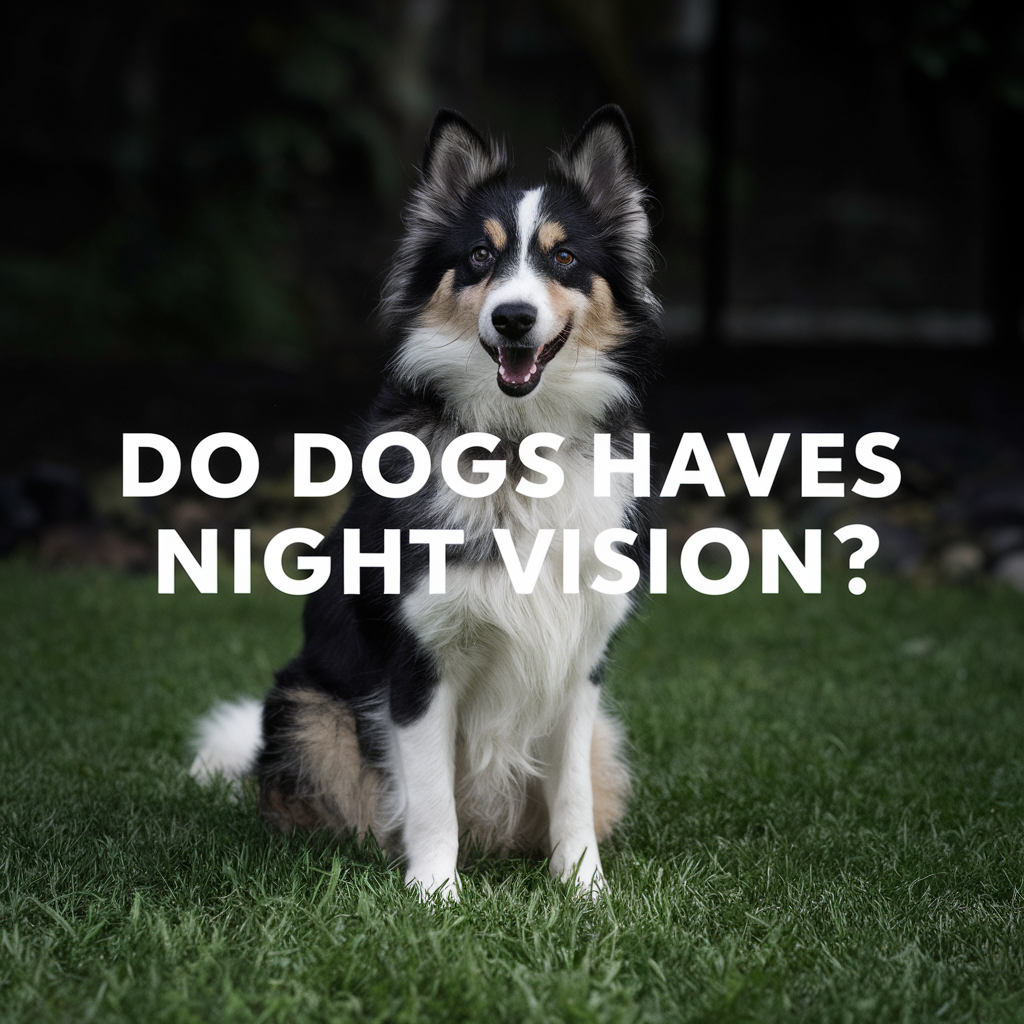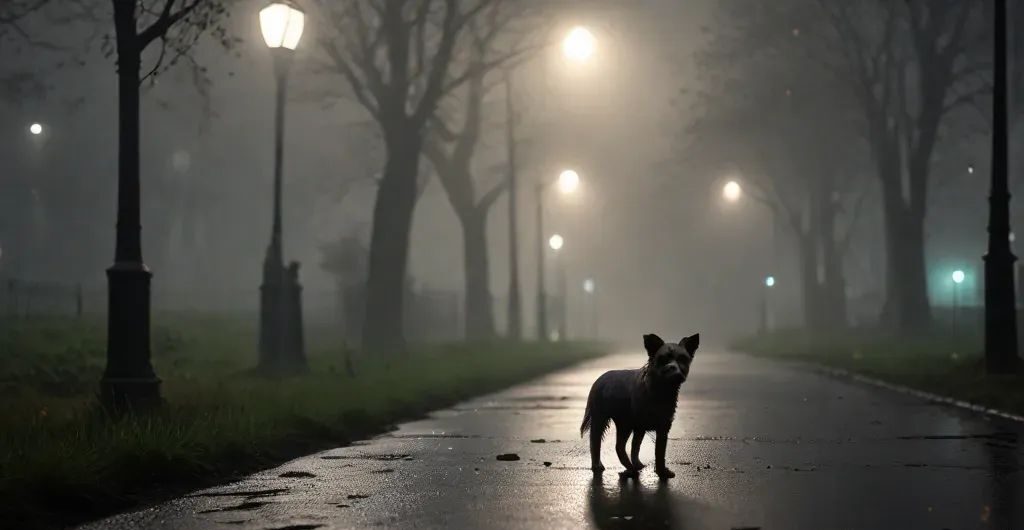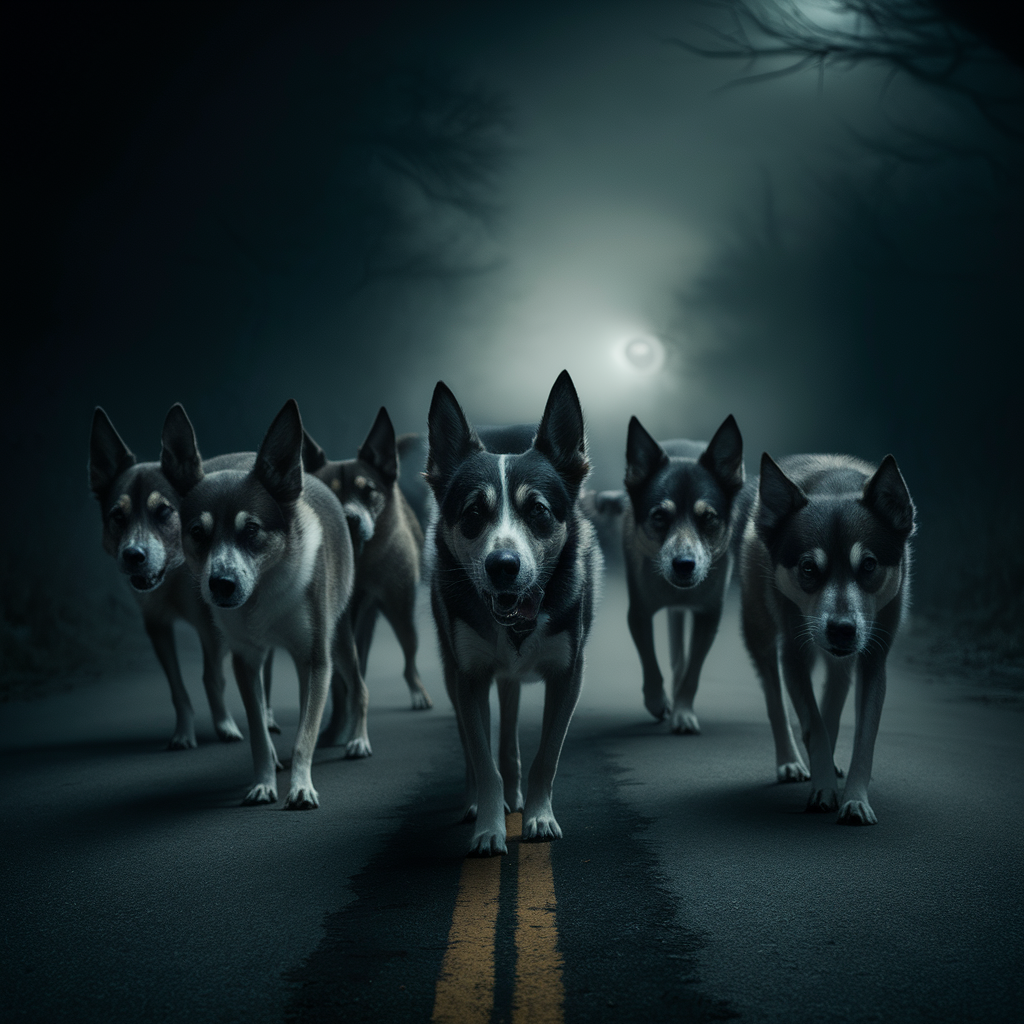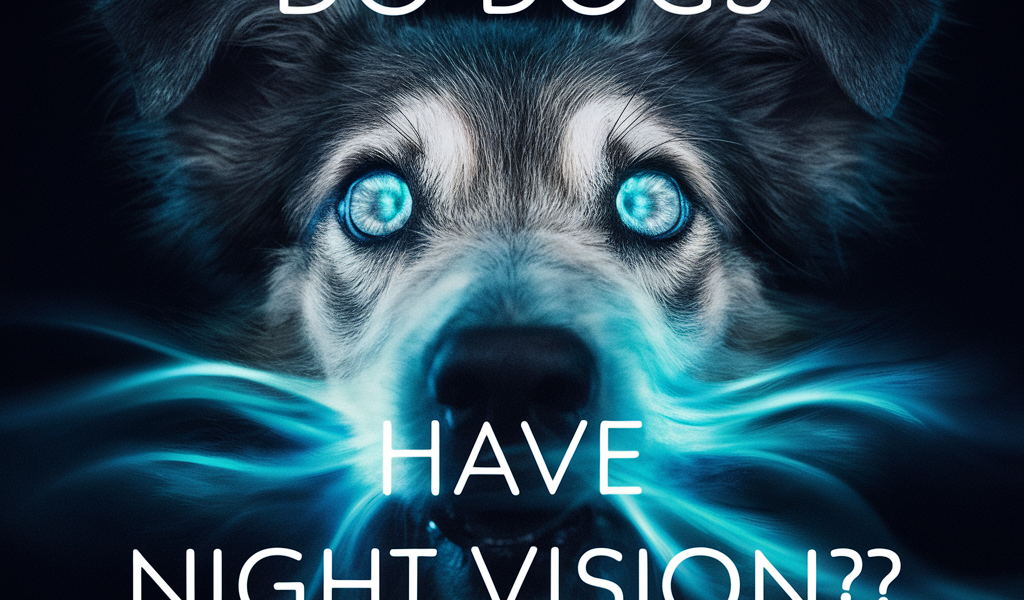Do Dogs Have Night Vision?
Do Dogs Have Night Vision? Yes, dogs have night vision, but it’s not the same as seeing in complete darkness. Thanks to their large number of rod cells and a reflective layer called the tapetum lucidum, dogs can see better in low-light conditions than humans. However, they still need some light to see; their vision is not perfect in total darkness. This enhanced ability allows them to navigate and detect movement in dim environments, making them well-suited for activities at dawn or dusk.

Understanding Night Vision
What is Night Vision?
Night vision refers to the ability to see in low-light conditions. It’s a common trait in many animals, particularly those that are nocturnal. The secret to night vision lies in the structure of the eyes, specifically the presence of certain types of cells and reflective layers that enhance vision in dim light.
How Night Vision Works in Animals
In animals with night vision, the eyes are equipped with a higher number of rod cells, which are more sensitive to light and motion. These rod cells, along with a reflective layer called the tapetum lucidum, help animals see better in the dark by amplifying the available light.
Dogs’ Vision: The Basics
Structure of a Dog’s Eye
The structure of a dog’s eye is similar to that of humans but with some key differences. Dogs have a larger cornea, which allows more light to enter the eye. Their retinas also contain more rod cells and fewer cone cells, which means they see better in low light but are not as adept at distinguishing colors.
Differences Between Human and Dog Vision
While humans rely heavily on color vision, dogs see the world in a more muted palette. They have dichromatic vision, meaning they see primarily in shades of blue and yellow. However, their increased rod cells and the presence of the tapetum lucidum give them an edge when it comes to seeing in the dark.
The Role of Rods and Cones
Rods vs. Cones: What They Are and Their Functions
Rods and cones are photoreceptor cells in the retina that detect light and color. Rods are responsible for vision in low light and are more sensitive to motion, while cones are responsible for color vision and function best in bright light. Dogs have a higher ratio of rods to cones compared to humans, which enhances their night vision.
How Dogs’ Eyes Are Adapted for Low-Light Conditions
Dogs’ eyes are specially adapted to low-light conditions thanks to their abundance of rod cells. This adaptation allows them to detect movement and navigate in dim environments where humans might struggle to see.

Can Dogs See in the Dark?
The Extent of Dogs’ Night Vision
Yes, dogs can see in the dark, but not in complete darkness. Their night vision isn’t perfect, but it’s much better than that of humans. Dogs can see in conditions that would be considered too dark for us, thanks to their superior low-light vision.
Comparisons with Human Night Vision
Humans, lacking a tapetum lucidum and having fewer rod cells, are not as adept at seeing in low light. In a darkened room, your dog is likely seeing things you can’t, thanks to their enhanced ability to gather light and detect movement.
Dogs vs. Cats: Who Has Better Night Vision?
A Comparison of Night Vision Capabilities Between Dogs and Cats
When it comes to night vision, cats generally have the upper hand. Cats are more nocturnal by nature and have even more rod cells and a more pronounced tapetum lucidum than dogs. This gives them superior night vision, allowing them to see in almost complete darkness.
Why Cats Are Known for Superior Night Vision
Cats are natural predators that often hunt at dawn or dusk. Their eyes are fine-tuned for these low-light conditions, which is why they are often regarded as having some of the best night vision among domestic animals.
The Tapetum Lucidum: Dogs’ Secret Weapon
What is the Tapetum Lucidum?
The tapetum lucidum is a reflective layer behind the retina that helps to improve night vision. It acts like a mirror, reflecting light that passes through the retina back into the eyes, allowing dogs to make the most out of whatever light is available.
How it Enhances Dogs’ Night Vision
This reflective layer is what causes the eyes of dogs (and many other animals) to glow when caught in headlights or a flashlight. It essentially doubles the light available to the photoreceptor cells, enhancing the dog’s ability to see in the dark.

Color Vision vs. Night Vision
How Color Perception Differs in Low Light
In low light, colors appear more muted and less distinct. For dogs, who already have limited color vision, distinguishing between different colors becomes even more challenging in the dark. Their eyes prioritize gathering light over color differentiation, which is why their night vision is so effective.
Why Dogs May Struggle with Colors but Excel in Darkness
Dogs’ vision is not optimized for vibrant colors but for detecting movement and navigating in dim light. This trade-off allows them to see better in low-light conditions, even though they don’t perceive the same range of colors as humans.
Common Myths About Dogs’ Night Vision: Do Dogs Have Night Vision?
Debunking Myths Like Dogs Seeing in Complete Darkness
A common myth is that dogs can see in complete darkness, but this isn’t true. While dogs have excellent night vision, they still need some light to see. They can navigate in dim conditions far better than humans, but total darkness is a challenge even for them.
Clarifying Misconceptions About Dogs’ Eyesight
Another misconception is that dogs are colorblind. While they don’t see the full spectrum of colors that humans do, they can still perceive some colors, particularly in the blue and yellow range. Understanding these facts can help dispel the myths surrounding dogs’ vision.
Practical Implications for Dog Owners
How Understanding Night Vision Can Help in Training
Knowing that dogs see better in low light can be useful for training. For instance, if you’re trying to teach your dog commands in the evening or early morning, remember that they might be able to see you better than you can see them.
Tips for Nighttime Walks and Activities with Your Dog
When walking your dog at night, it’s important to remember that while they can see better than you, they still need some light to navigate. Using reflective gear for your dog and sticking to well-lit paths can make nighttime walks safer and more enjoyable.
Night Vision in Puppies vs. Adult Dogs: Do Dogs Have Night Vision?
Differences in Night Vision Between Puppies and Adult Dogs
Puppies are still developing their vision, and their night vision may not be as strong as that of an adult dog. As they grow, their eyes mature, and their ability to see in the dark improves.
How Night Vision Develops as Dogs Age
As dogs age, their night vision can decline, much like in humans. Older dogs may struggle more in low-light conditions, so it’s important to make adjustments to their environment to help them navigate safely.
How to Enhance Your Dog’s Night Vision
Diet and Supplements That May Support Eye Health
A balanced diet rich in vitamins A, C, and E, as well as antioxidants, can help maintain your dog’s eye health. Some supplements are specifically designed to support vision, but it’s best to consult your vet before adding anything new to your dog’s diet.
Tips for Creating a Night-Friendly Environment for Your Dog
To help your dog see better at night, keep their environment clutter-free and consider using night lights. This can prevent accidents and make it easier for your dog to move around in the dark.
Signs Your Dog May Have Vision Problems
Symptoms of Night Vision Issues
If your dog is hesitant to move in low light or bumps into objects at night, these could be signs of vision problems. Other symptoms might include cloudy eyes or excessive blinking.
When to Consult a Vet
If you notice any changes in your dog’s night vision or overall eyesight, it’s important to consult a vet. Early detection can help manage any potential issues and keep your dog’s eyes healthy.
Conclusion: Do Dogs Have Night Vision?
In conclusion, while dogs don’t have night vision in the sense of seeing in complete darkness, they are certainly better equipped than humans to see in low-light conditions. Their eyes are specially adapted with more rod cells and the tapetum lucidum, allowing them to make the most out of minimal light. So, if you’re ever wondering, Do Dogs Have Night Vision? , it’s clear that while dogs do have impressive night vision, cats generally have the upper hand. Understanding these differences can help us better care for our pets, ensuring they are safe and comfortable in all lighting conditions.
FAQs: Do Dogs Have Night Vision?
- Is there night vision for dogs?
Dogs don’t have night vision goggles, but they have better low-light vision than humans due to more rod cells in their eyes. - Can dogs see in total darkness?
No, dogs can’t see in complete darkness; they need some light to see, but they can see better in low light than humans. - What color are dogs’ eyes at night?
Dogs’ eyes can appear to glow or reflect light at night due to a layer called the tapetum lucidum, which helps enhance low-light vision. - Why can’t my dog see at night?
If your dog struggles to see at night, it could be due to aging, health issues, or a lack of light; consult a vet if vision problems persist.

Jahanzaib Kaleem is a passionate and knowledgeable pet writer and veterinarian dedicated to enhancing the well-being of pets and educating pet owners around the world. With years of experience in veterinary medicine and a deep love for animals, Jahanzaib combines his medical expertise with a flair for writing to deliver insightful and practical advice on pet care.





















2 COMMENTS